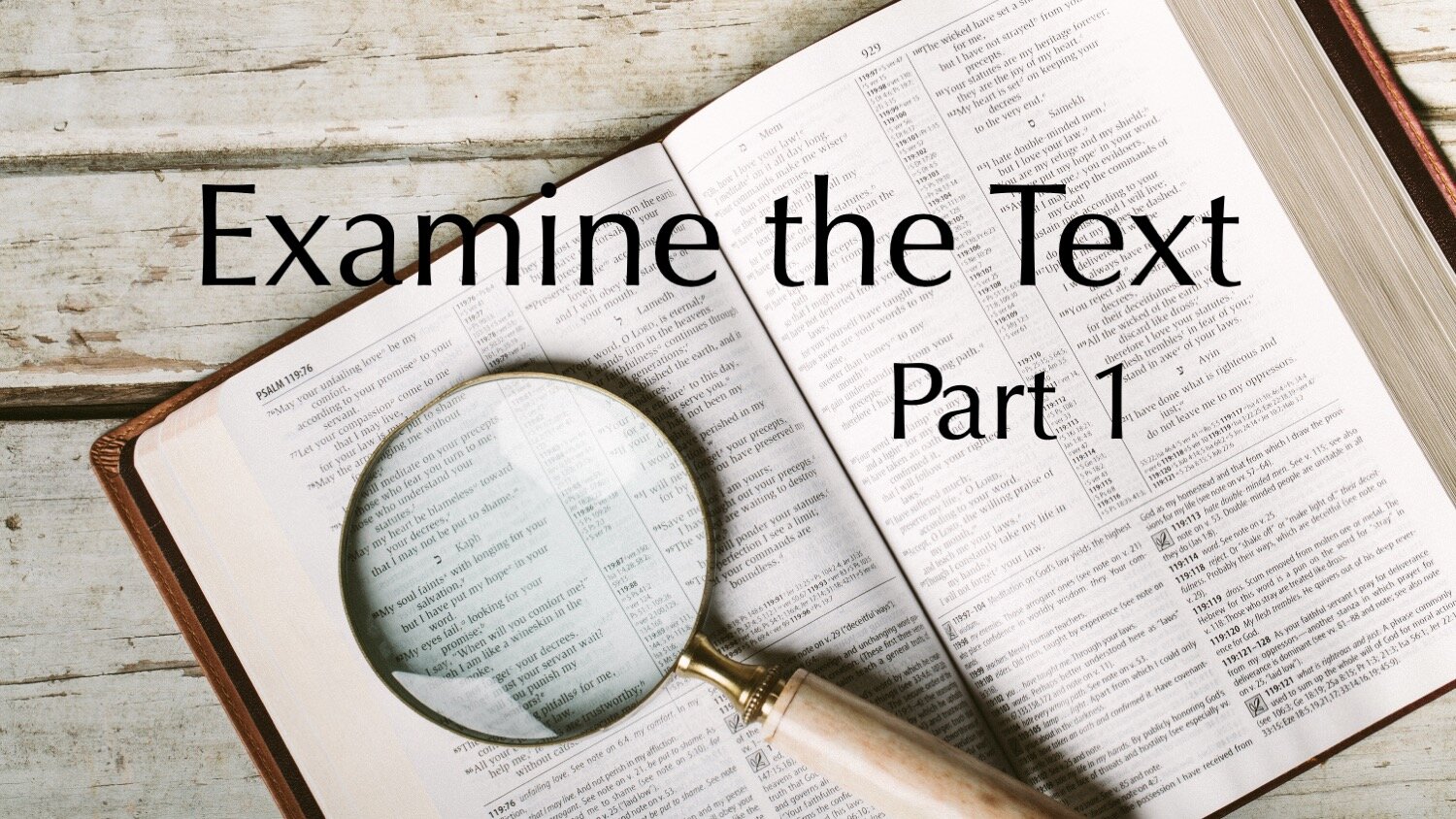Examine the Text
Getting to Know the Text First-hand
Only as an adult did I stand for the first time at the rim of the Grand Canyon. I had seen the pictures. I had heard reports. The depth, the colours, the geological layers of sediment and rock — all information I had since I was a boy. But nothing compared to experiencing it for myself. Later, trying to describe it to a friend, I realized how impossible it was to capture such grandeur in words, or even pictures. Information is in ready supply, but you don’t really know a thing until you know it experientially. So it is with the Scriptures. If you want to know the text, you must examine the text for yourself.
Once you have chosen a text and gotten the big picture of the story around the text and the story behind the text, it’s time to have your own dialogue with the text. Resist the temptation to jump right into the verse by verse discussion in your favourite commentary, or listen to a sermon from your favourite preacher on the same passage. This will only give you second-hand information. You need to have your own conversation, your own encounter.
This step in the sermon process is all about asking questions. Typically, one question will almost always lead to another, but here are three big questions to get you started:
1. What Kind of Literature Is It?
We think of the Bible as a single book, and it is. But we also know it contains many books. We also believe that it has God as its author. Yet we also recognize that the Holy Spirit authored the Scriptures through the experiences, life situations, and minds of many writers. The final product, then, is not a single theological treatise, or even a seamlessly continuous story line. The Bible presents a rich tapestry of genres and forms, each of which contributes in a unique and indispensable way to lead us to know who God is, who we are, and how we are to relate to him.
Begin the conversation with this question: “What kind of literature is it?” Is it historical literature, telling the stories of Israel? Is it a psalm, inviting us into the corporate and personal worship of God’s ancient people? Does it fall more into the category of wisdom or prophetic literature? Is it gospel, epistle, or apocalyptic? The initial answer may seem obvious, but the value of asking and answering is not just to know what it is, but also to know how it works.
Determine up front the major genre of your text. Read it in light of its own purposes and rules. This simple step will take you a long way down the road of understanding what it meant, and discerning what it means today.
2. What Kind of Language Is It?
Within the numerous larger genres, we find at least three different kinds of language. Much of the Scriptures appears as prose in the form of discourse, description and formal argument. Sometimes, we find ourselves reading poetic language, with its vivid imagery and rhythmic patterns. Then there is narrative, that special kind of prose that makes its point through the tension and resolution of a plot line. Each of these communicates in a different way, and reading them accordingly will keep us on track to understand their meaning.
Though some genres tend toward one kind of language or another, each type can appear in any genre. Psalms are predominately poetry, but some psalms also tell a story. The authors of the epistles write mostly prose, but sometimes erupt into poetry. The Gospels tell a story, but also contain prosaic discourse and the occasional poetic aphorism.
3. What Do the Words Mean?
As you continue to examine an ever-narrowing circle of meaning, the time comes to focus on the meaning of the words themselves. Discovering this meaning is often not as simple as we might think. In essence, words are symbols that convey meaning. Good communications happens only when a word has the same meaning for the person hearing or reading it as it has for the person speaking or writing it.
As we read the Scriptures, we constantly face a number of problems related to this process. For starters, a word can have more than one meaning, even in the same language. Sometimes, then, the first order of business is to discern which meaning is intended. Then add the complication that a word in one language often does not correspond exactly to a single word in another language. Nuances and shades of meaning make it impossible to translate a text perfectly. In addition, the meanings of words change over time. So, “insights” gained from studying a word’s early roots may actually lead us to a false understanding of its meaning at a later time.
As you can see, each of these major questions can lead to a number of follow-up questions in our conversation with a preaching text. Follow the links in the titles of each of the sections in this post above to get more detailed pointers in each aspect of your study. This kind of inductive study can yield valuable insight before you ever crack open a commentary. Even more importantly, you become not only knowledgeable about the text, but intimately acquainted with it. This first-hand knowledge prepares you to introduce it to your hearers not merely as an object of study, but as a friend.


